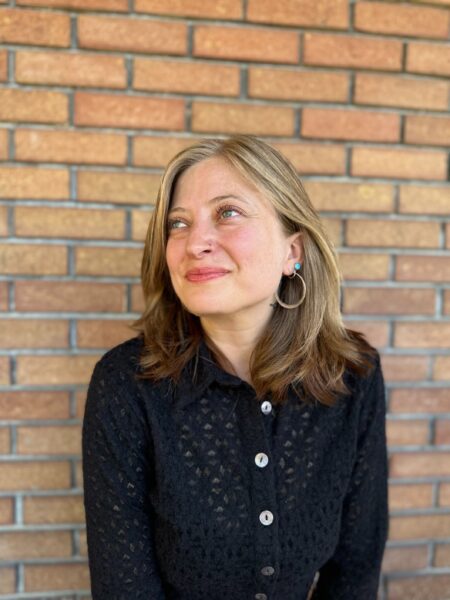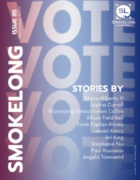This story is full of boundaries, emotional and physical. Yet, these boundaries are tenuous, slipped into and out of. The narrator is desperate to traverse those boundaries, to reach for her lover, always. What, then, is the purpose of boundaries? Are they a divide or a bridge? A place where things can meet, or lines that can never be crossed?
I’m so interested in boundaries as places that are simultaneously divisive and unifying. Because when you really think about it, a boundary is not just a border but also a threshold. They’re transitory locations. Lines one must pass over or through, and the moment you’re on the boundary, you’re in both locations and neither location—whether that be physical or otherwise. I think too, as someone who is bisexual and bipolar, there is a constant slippage between socially imposed dualities. So again, we have these boundaries that are, in my opinion, really more permeable than we give them credit for.
The refrain “yes and yes and yes” sounds like a lullaby, possessing a musical quality that sweeps me along. It also has an infinite quality; when the story is over its rhythm remains. What does “yes” really mean when it connotes not yet or not really? Is an empty promise better than no promise at all? Is the hope it gives a blessing or a curse?
I imagine the yes functioning almost like yes, and in improv. An expression that isn’t necessarily an agreement, but rather a starting point for the next action. And of course, there’s the connection to Molly Bloom in Joyce’s Ulysess: her yes is like a metronome throughout her monologue—at times an exaltation of desire, at other times a kind of threshold (speaking of boundaries). I guess what I’m saying is: maybe even an empty yes isn’t really empty at all, but rather a way to bridge one action to the next. Maybe both a blessing and a curse, and also neither?
Though the story is titled “Yes,” and the word plays a central teasing role, its companion is “always.” If the lover’s promise is yes, the narrator’s promise is always. At the end, they live and breathe in the same sentence. Together can they be more, mean more, than they did separately? Are these mutual promises the culmination of love, or its end?
I think sometimes the culmination of love is an ending. I also think memory is slippery: yes always can be true in a past that technically no longer exists, but that doesn’t make the yes always any less true. For the narrator and her lover, the yes shifts between them, while the always belongs to the narrator. This is because we are in the narrator’s point of view, and because her desire—to herself—is more consistent, more permanent. Additionally, I think the yes always is more a promise to the self than to the lover. Yes always to vulnerability, yes always to intimacy, yes always to love.
This story often highlights difference through similarity: they are both women, and yet they are very different people. This idea stood out to me in the line “This is Utah after all. This is April ….” The similar structure throws these ideas—Utah and April—into stark relief. What inspired this striking line?
To be honest: It was Utah, but I think it was October. My first “real” date with a woman. “Real” because it was my first date after coming out as bisexual in my thirties. “Real” because when I did come out, I was in a long-term relationship with a man. We broke up, and I went on this particular date. I remember being slightly afraid—the fact of it being Utah (I am from California). The fact of our two woman bodies on a walk. Nothing intimate—it was a first date after all—but I knew, and I was afraid. I think Utah plus fall plus fear makes sense in some bizarre story logic. But I wanted the contrast of spring, the way spring evokes renewal, hope. I wanted those to work together and against each other.
I was taken with the image of the lover as “a crescent moon of body.” This story is filled with imagery of hell, but this reference to the moon is our only view of heaven. How did you envision the divine in this story? Can heaven be found within ourselves or within another? Are love and idolatry related?
I guess I feel like the moon is part heaven, part loneliness. Or maybe I imagine heaven to be a bit lonely, a bit boring really. Either way, I think the body is inherently a lonely place to inhabit. So divided from others and yet so dependent on so much it can’t necessarily control: sustenance, shelter, affection. When I think of the divine, I don’t really like to think of the duality of it: heaven or hell. The divine, I think, does dwell in the corporeal—in pleasure specifically. And I do think love and idolatry can be bound together: I feel this as a confusion between my desire to be someone and my desire for someone. Maybe classically unhealthy, maybe just an ethereal impulse.


